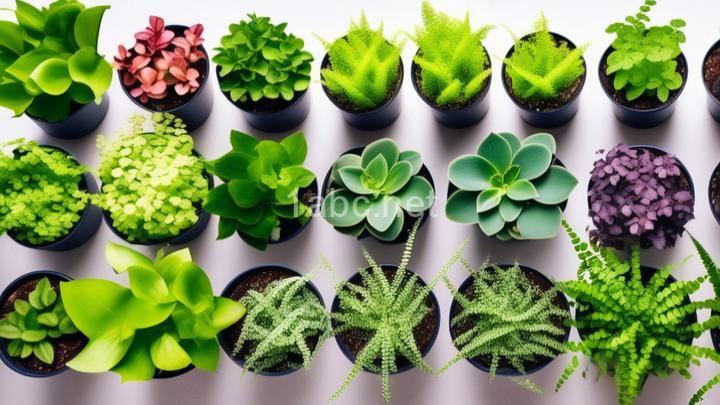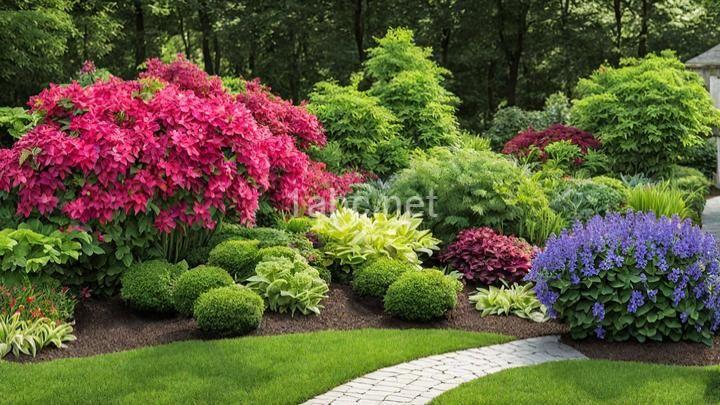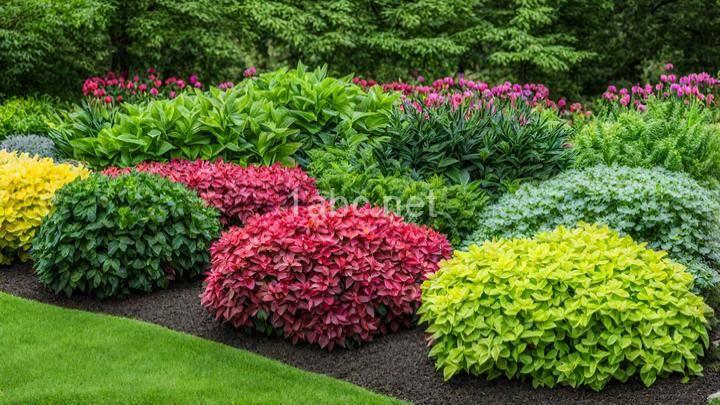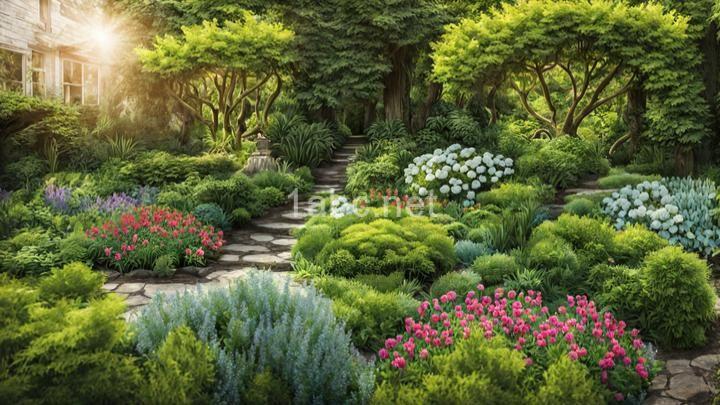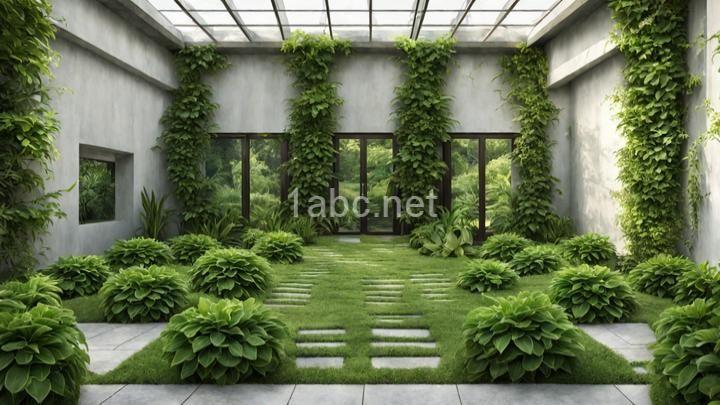A Guide to Choosing the Perfect Shade Plants for Your Garden
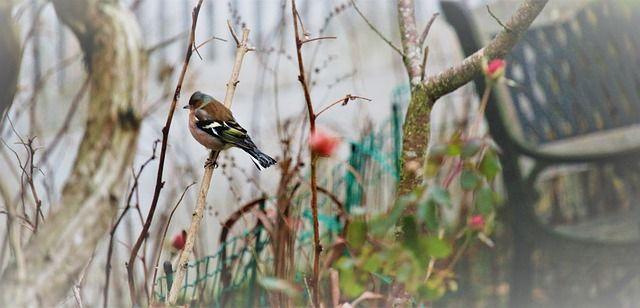
Introduction:
Welcome to our friendly guide on choosing shade plants for your garden! In this comprehensive blog post, we will explore the beauty and benefits of shade plants and how they can transform your outdoor space. Whether you have a fully shaded area or a partial shade spot, we'll provide you with all the information you need to create a stunning garden filled with lush greenery and vibrant blooms.
I. Understanding Shade:
Before we dive into the world of shade plants, let's first understand what shade is and why it is important for certain plants. Shade refers to an area where direct sunlight is limited or blocked by structures, trees, or other plants. While some plants thrive in full sun, others require shade to grow and flourish. Understanding the different levels of shade is crucial in determining which shade plants will thrive in your garden. From full shade, where no direct sunlight reaches the area, to partial shade, where there is some sunlight exposure, each level of shade has its own set of requirements.
II. Benefits of Shade Plants:
Incorporating shade plants into your garden comes with numerous advantages. Not only do they add texture, color, and depth to shaded areas, but they also create a cool and tranquil atmosphere. Shade plants can transform a dull and lifeless spot into a lush and inviting oasis. They provide relief from the scorching sun and can even help reduce the temperature in your outdoor space. With their unique foliage and blooms, shade plants offer a refreshing contrast to the rest of your garden, adding visual interest and diversity.
III. Types of Shade Plants:
Now that we understand the importance and benefits of shade plants, let's explore the different types available and their characteristics.
A. Perennials:
Perennial shade plants are a great investment for your garden as they come back year after year. They are known for their resilience and ability to withstand shade conditions. Some popular perennial shade plants include hostas, ferns, and astilbes. Hostas, with their large and textured leaves, add a touch of elegance to shaded areas. Ferns, on the other hand, bring a lush and tropical feel with their delicate fronds. Astilbes are known for their stunning plume-like flowers that bloom in various colors. These shade-loving perennials require minimal maintenance and are a great choice for any garden.
B. Annuals:
If you're looking to add instant pops of color to your shaded garden, annual shade plants are the way to go. Unlike perennials, annuals need to be replanted each year, but they offer an abundance of vibrant blooms during the summer months. Impatiens, begonias, and coleus are popular choices for annual shade plants. Impatiens come in a wide range of colors and are known for their ability to thrive in shady conditions. Begonias offer a variety of foliage and blooms, adding a tropical touch to your garden. Coleus, with its vibrant and colorful leaves, brings an artistic flair to any shaded area.
C. Groundcovers:
Groundcovers are low-growing plants that spread quickly, providing a carpet-like effect in shaded areas. They not only add visual interest but also help prevent weed growth. Vinca minor, pachysandra, and ajuga are popular options for shade-loving groundcovers. Vinca minor, also known as periwinkle, produces beautiful purple flowers and thrives in shady spots. Pachysandra forms a dense mat of dark green leaves, creating a lush and uniform look. Ajuga, with its colorful foliage and spikes of flowers, adds a striking element to any shaded garden.
IV. Selecting Shade Plants:
When selecting shade plants for your garden, there are a few important factors to consider.
A. Assessing Soil Conditions:
Before you start planting, it's essential to assess your soil conditions. Testing the soil pH and drainage will help you determine which shade-loving plants are best suited for your garden. Some shade plants prefer acidic soil, while others thrive in alkaline or neutral soil. Additionally, understanding the drainage capabilities of your soil will help you choose plants that can withstand wet or dry conditions.
B. Considering Light Requirements:
While shade plants thrive in shaded areas, it's important to remember that not all shade is created equal. Some shade plants can tolerate more sunlight than others. When selecting shade plants, consider the specific level of shade in your garden. If you have partial shade, you may have more options available compared to a fully shaded area. Be sure to choose plants that are suitable for the amount of sunlight your garden receives.
C. Matching Plant Characteristics:
To create a visually appealing garden, it's important to consider the characteristics of the shade plants you choose. Pay attention to the height and spread of the plants, as well as their bloom time. This will help you create a well-balanced and harmonious garden design. If you're aiming for a specific color scheme or theme, select plants that align with your overall aesthetic vision.
V. Care and Maintenance:
Once you have selected your shade plants and planted them in your garden, it's important to provide proper care and maintenance to ensure their health and longevity.
-
Watering: Shade plants generally require less water than their sun-loving counterparts. However, it's essential to monitor the moisture levels in the soil and provide adequate watering when needed. Be mindful not to overwater, as this can lead to root rot.
-
Fertilizing: Shade plants benefit from regular fertilizing to ensure they receive the necessary nutrients. Choose a balanced fertilizer and follow the instructions on the packaging for application rates. Avoid over-fertilizing, as this can lead to excessive foliage growth and fewer blooms.
-
Pruning: Regular pruning is important to maintain the shape and health of your shade plants. Remove any dead or damaged foliage to prevent disease and promote new growth. Prune back any overgrown branches to maintain a neat and tidy appearance.
-
Pest and Disease Control: Like any other plants, shade plants are susceptible to pests and diseases. Regularly inspect your plants for signs of infestation or disease and take appropriate measures to control the problem. This may include using organic pest control methods or seeking the assistance of a professional if necessary.
Conclusion:
Creating a beautiful garden is all about finding the perfect balance of color, texture, and harmony. With this comprehensive guide as your companion, you're well on your way to selecting the perfect shade plants for your garden. Whether you choose perennials, annuals, or groundcovers, shade plants have the power to transform your shaded areas into stunning and vibrant spaces. So, embrace the beauty of shade and let your garden flourish in the cool and tranquil oasis you've created. Don't hesitate to reach out with any further questions or share your gardening experiences with us. Happy gardening!
FREQUENTLY ASKED QUESTIONS
What is A Guide to Choosing the Perfect Shade Plants for Your Garden?
"A Guide to Choosing the Perfect Shade Plants for Your Garden" is a comprehensive resource that provides valuable information and tips for selecting and cultivating shade plants in your garden. It takes into account factors such as the amount of shade in your garden, the soil conditions, and the specific needs and preferences of different shade plants.
This guide offers guidance on:
-
Assessing the shade level: Understanding the different levels of shade (full shade, partial shade, dappled shade) and determining which shade plants thrive in each level.
-
Selecting shade-tolerant plants: Exploring a wide range of shade-loving plants that are known for their ability to thrive in low-light conditions.
-
Considering soil conditions: Taking into consideration the soil type and quality in your garden to ensure that the chosen shade plants are well-suited to the specific soil conditions.
-
Addressing maintenance requirements: Providing insights into the care and maintenance required for different shade plants, such as watering needs, fertilization, and pruning.
-
Designing with shade plants: Offering practical tips and suggestions on how to incorporate shade plants into your garden design, creating a visually appealing and harmonious landscape.
By following this guide, you can confidently choose the perfect shade plants for your garden and create a beautiful and thriving shade garden space.
Why should I consider shade plants for my garden?
There are several reasons why you should consider shade plants for your garden:
-
Thrive in low light: Shade plants are adapted to grow and thrive in areas with limited sunlight. They have the ability to photosynthesize and produce energy with lower light levels compared to other plants.
-
Reduce maintenance: Shade plants generally require less maintenance compared to sun-loving plants. They often have slower growth rates, reducing the need for frequent pruning or trimming.
-
Enhance aesthetics: Shade plants can bring a unique and lush look to your garden. Many shade-loving plants have beautiful foliage with various colors, shapes, and textures, providing visual interest even without vibrant flowers.
-
Control soil erosion: Shade plants can help prevent soil erosion, especially in areas where the soil is prone to being washed away by rainwater. Their dense root systems can stabilize the soil and minimize the risk of erosion.
-
Provide a cooling effect: Shade plants can create a cooling effect in your garden, making it a more comfortable space during hot summer months. They can help reduce the temperature around them and provide a shady spot to relax.
-
Attract wildlife: Some shade plants produce flowers, fruits, or berries that can attract birds, bees, butterflies, and other pollinators to your garden. This can support biodiversity and create a lively ecosystem.
-
Environmental benefits: Shade plants contribute to a healthier environment by improving air quality, reducing noise pollution, and conserving water. They also play a role in carbon sequestration, helping to mitigate the effects of climate change.
Overall, incorporating shade plants into your garden can enhance its beauty, reduce maintenance, and contribute to a more sustainable and enjoyable outdoor space.
How do I determine if my garden has enough shade for shade plants?
Determining if your garden has enough shade for shade plants can be done by observing the amount of sunlight your garden receives throughout the day. Here are a few steps to help you make that determination:
-
Observe sunlight patterns: Spend some time in your garden and observe the patterns of sunlight throughout the day. Take note of which areas receive direct sunlight, partial shade, or full shade.
-
Measure sunlight intensity: Use a sunlight meter or a smartphone app that measures sunlight intensity to get more accurate readings. This will help you understand the level of shade in different areas of your garden.
-
Understand shade requirements: Shade plants have varying shade tolerance levels. Some plants prefer full shade, while others can tolerate partial shade. Check the specific light requirements for the shade plants you are interested in.
-
Consider the surrounding environment: The surrounding structures, trees, or other plants can also affect the amount of shade in your garden. Take note of any structures that cast shadows or block sunlight.
By combining these observations, you should be able to determine if your garden has enough shade for shade plants. Remember to choose plants that are compatible with the level of sunlight your garden receives to ensure their successful growth.
What are some popular shade plants that I can consider?
There are several popular shade plants that you can consider for your garden. Here are a few options:
-
Hostas: These leafy perennials come in a variety of sizes, shapes, and colors, and they thrive in shady areas.
-
Ferns: Ferns are known for their graceful fronds and are perfect for adding a touch of green to shady spots. Some common types include the Boston fern and the maidenhair fern.
-
Bleeding Heart: The bleeding heart plant produces heart-shaped flowers in shades of pink and white and can add a pop of color to shady areas.
-
Astilbes: These feathery flowers come in various shades of pink, red, and white. They are known for their ability to thrive in shade and add a vibrant touch to any garden.
-
Heucheras: Also known as coral bells, these plants have colorful foliage that can add visual interest to shady areas. They come in various shades, including purple, green, and silver.
These are just a few popular shade plants, but there are many other options available. Keep in mind the specific conditions of your garden and choose plants accordingly.
